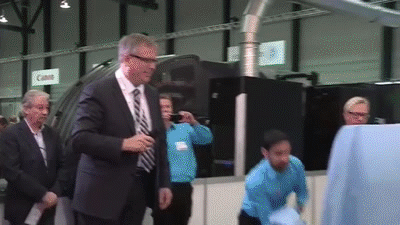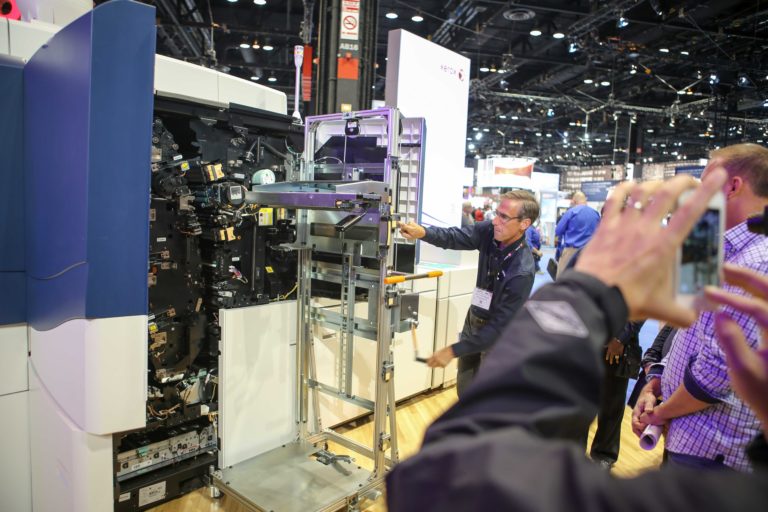
Everyone who pays attention to this industry knows that inkjet is the next transformational technology in commercial and production printing. InfoTrends projects that production color inkjet will account for 59 percent of production color volume in North America and Western Europe by 2018, up from 31 percent in 2012, even as xerographic printing also experiences healthy growth.
Who will capture this fast growing inkjet volume? Today only the largest print shops have the high volumes and deep pockets required to justify seven-figure inkjet acquisitions—and the space to accommodate the impressively huge frames of these presses.
So where does that leave the many small and medium-sized firms that compete for the transactional and promotional pages that are now migrating to inkjet? Will they be able to compete as the lower production costs of inkjet become the norm?
At Xerox, we are dedicated to helping our customers succeed. And to succeed in this emerging era of rapid inkjet growth, small and mid-sized print operations need new product options to help them to not just compete with today’s inkjet behemoths, but to give them an edge.
What will these new inkjet products look like? Here are our thoughts: Acquisition costs need to be a lot lower than what is on the market today. The migration path—from digital monochrome, digital color or offset—should be an easy one. The press must run reliably at much higher speeds than xerographic presses and produce impressive volumes, yet operations should be simple, to optimize operator productivity. Print quality needs to be very good—in fact, improving upon the current generation of inkjet presses would bring a nice competitive advantage. And the machine should be a good citizen of the print shop, taking up minimal space and offering an open architecture to run with all the leading workflow systems.
The press would target a similar set of high-growth applications as the larger presses: transactional documents like bills and statements; promotional pieces, such as brochures, catalogs and direct mail; and publishing applications, such as books, manuals and periodicals. And it would deliver a similar white-paper-in workflow whereby blank sheets are fed in and full-color documents come out, eliminating the cost and productivity loss associated with overprinting on offset-produced shells.
In short, the system needs to deliver top performance, benchmark efficiency and unstoppable flexibility.
Xerox has made its mark in this industry with disruptive technology. We invented the first laser printer; we created the digital publishing market with the DocuTech; and we made digital color printing offset-like, reliable and productive with the iGen. In 2013, Xerox acquired Impika, citing a desire to help shape the future of inkjet printing.
Soon, you will see the initial fruits of that effort.
**UPDATED: EDITORS NOTE**

On February 23 at Hunkeler Innovationdays in Lucerne, Switzerland, we launched the Xerox Rialto 900 Inkjet Press, the first-ever fully-integrated roll-to-cut sheet press that packs big performance into a smaller, more efficient, more accessible package.
Check out our blog to learn more, see the full unveiling on YouTube, or visit the Xerox Rialto 900 Inkjet Press on Xerox.com for full product information.




Comments are closed.